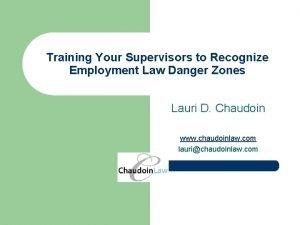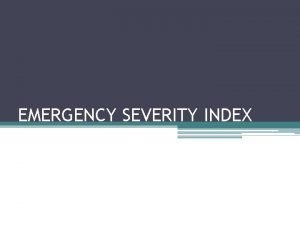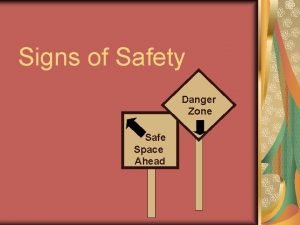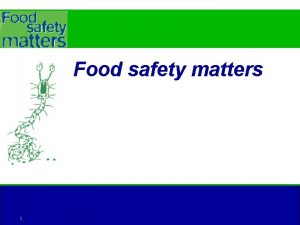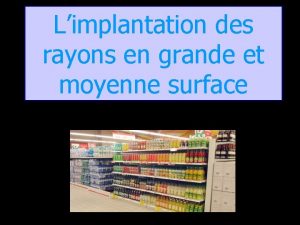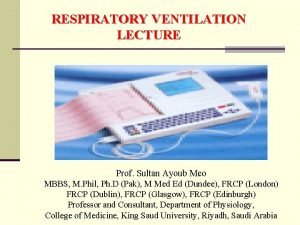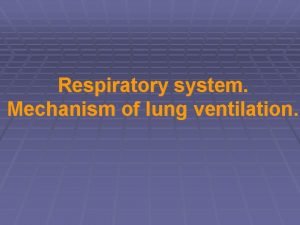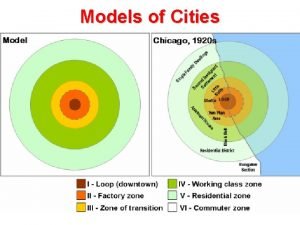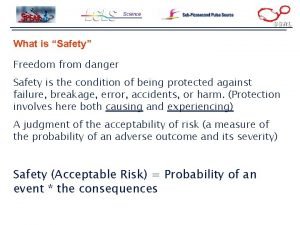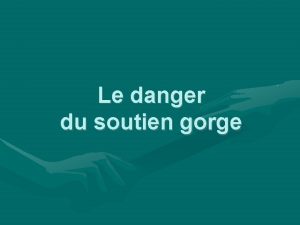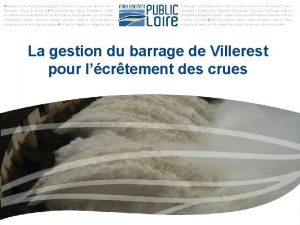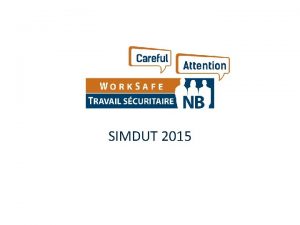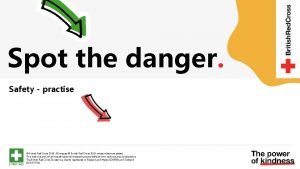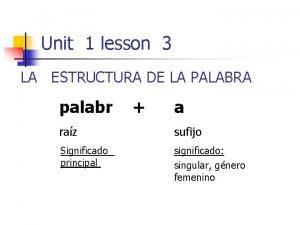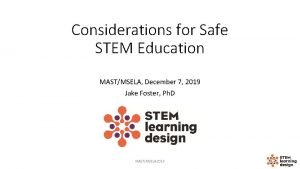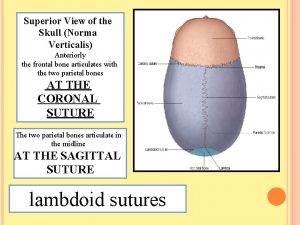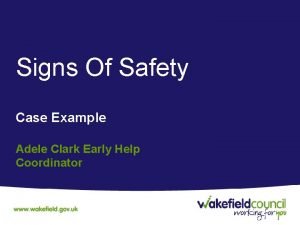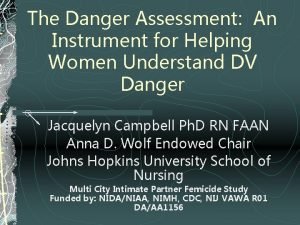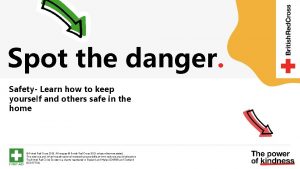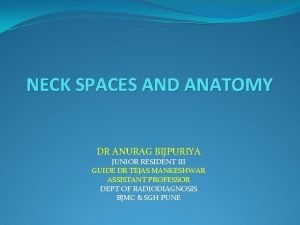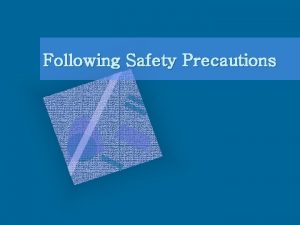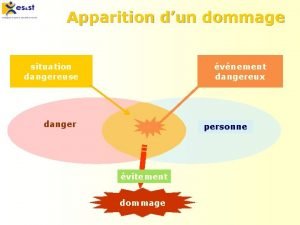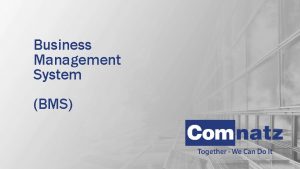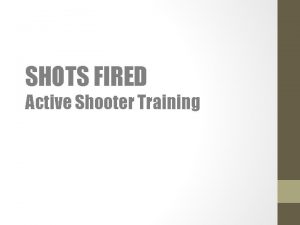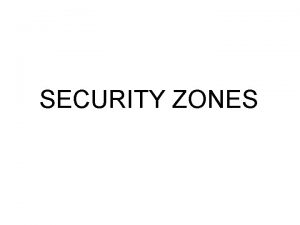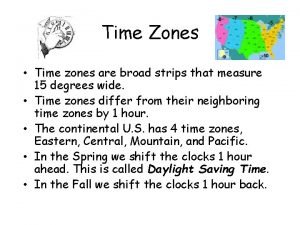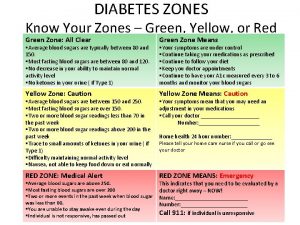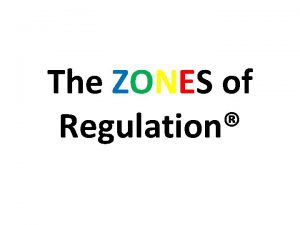The Danger Zones Where is the Danger Zone




























































- Slides: 60

The Danger Zones • Where is the Danger Zone? – Anywhere outside the bus where children are in most danger of being hit by vehicle – What vehicles could be a danger to the children? – The Bus or Another Vehicle • How far does the danger zone extend from the bus? – As much as 30’ in front of the bus. – What is the most dangerous distance in the front of the bus. • 12 feet from the front of the bus. – 10’ from either side and 10’ from the rear of the bus.

Correct Mirror Adjustment • Which mirror(s) should you check before operating the school bus? – All mirrors. – What is vitally important in the proper use of the mirrors? – Proper adjustment. • What are you checking for in your mirrors? – Students – Vehicles Other Objects. – Where are the convex mirrors located? • Below the outside flat mirrors. • They are used to see at a wide angle down the left and right side of the bus.

Outside Right and Left Convex Mirrors • Do the convex mirrors give a view of people and objects that properly reflect their size? – No – the view is somewhat distorted. • What should you be able to see in the convex mirrors? – The entire side of the bus up to the mirror mounts. – Front of the rear tires touching the ground. – At least one traffic lane on either side of the bus.

Outside Left and Right Cross View Mirrors • Where are they mounted? – The left and right front corner of the bus. – What are they used for? • To see the danger zone directly in front of the bus that cannot be seen by direct vision. • And, the left and right side of the bus including the service door and front wheel area. • Again, convex mirrors do not properly reflect sizes and distances from the bus. • Again, the driver must ensure that the mirrors are properly adjusted.

Outside Left and Right Cross View Mirrors • Ensure the mirrors are properly adjusted so you can see: – The entire area in front of the bus from the front bumper to the ground – Front tires where they touch the ground – Area from front of the bus to the door. • Make sure you have a logical sequence in which you look at all mirrors. – What would be a logical sequence for checking mirrors?

Overhead Inside Rearview Mirror • Mounted directly above driver. • Used to monitor passengers. • Provides limited visibility behind bus. – Blind spot directly behind driver. – Blind spot from rear bumper up to 400 feet. • Ensure mirror are properly adjusted so you can see. – Top of the rear window in the top of the mirror. – All of the students, including the heads of the students right behind you.

Loading and Unloading • More students killed loading and unloading then are killed inside the bus. • It is essential to know what to do before, and after loading and unloading. • Following are procedures that will help you avoid unsafe conditions which could result in injuries and / or fatalities during loading and unloading.

Approaching The Stop • District establishes routes and bus stops. • All stops should be approved by district. • Never change bus stop without written approval from district. • Extreme caution must be taken when approaching a stop. • What equipment is involved in a bus stop? – – Mirrors properly used Flashing lights Stop arm when equipped, crossing control arm

Approaching The Stop • When approaching the stop you should: – Approach at a slow rate of speed – Look for people, vehicles, objects before, during and after stop. – Continuously check ALL mirrors. – Activate amber flashing lights before bus stop – according to state law. – Continuously check mirrors to monitor danger zone – Move as far as possible to the right of the traveled portion of the roadway.

Approaching The Stop – Bring the bus to a stop with the front bumper at least 10 feet from the student. – Place transmission in neutral and set park brake at each stop. – If possible, activate flashing red lights when traffic is a safe distance away. – Make a final check to ensure traffic has stopped before opening door fully and signaling student to approach.

Loading Procedure – Students should wait in a designated area, facing the bus. – Students should not board the bus until signaled to do so. – Monitor mirrors continuously – Count the students at the stop and make sure all have boarded. If a student is missing, ask other students about her before moving. – With the dome light on, have students board the bus (using handrail) in single file. – Wait until all students are seated and facing forward before moving – Check all mirrors to ensure no one is running to catch the bus.

Loading Procedure – If a student cannot be accounted for, secure the bus (what does this mean) take the keys, check around and underneath the bus. – When all students are accounted for, prepare to leave by: • • Closing door. Engaging transmission Release park brake Turn off alternating flashing red lamps. Turn on left turn signal. Allow congested traffic to disperse. Check all mirrors again. When safe, move the bus into traffic flow.

Loading Procedure • The loading procedure is essentially the same wherever you load students, but there are slight differences. • When loading students at school campus, you should: – Turn off the ignition switch. – Remove key if leaving drivers compartment. – Position yourself to supervise loading as require or recommended by state or local regulations.

Unloading Procedure on the Route • Perform safe stop at unloading areas as described earlier. – Have students remain seated until told to exit. – Check all mirrors. – Count all students as they unload to confirm their location before leaving stop. – Tell students to exit the bus and walk at least 10 feet away from the bus, to a position where driver can plainly see students. – Check all mirrors again to ensure no students are around, or returning to the bus.

Unloading Procedure on the Route – If you cannot account for a student outside the bus, follow procedure described for loading, and look around and underneath the bus. – When all students are accounted for, prepare to leave by: • • • Closing the door. Engaging transmission. Releasing park brake. Turning off flashing red lights. Turn on left turn signal. Allow congested traffic to disperse. Check all mirrors again. When safe to do so, enter the flow of traffic and continue route. If you have missed a student loading, do not back up.

Additional Procedures for Crossing Roadway • Will students always do what they are suppose to do when exiting the bus? • Because they will not, the driver must be aware at all times in order to take care of them. • When crossing the roadway, students should follow these procedures: – Walk 10’ away from the side of the school bus – where they can be seen. – Walk 10’ to the right front of the bus, but not in front of the bus.

Additional Procedures For Crossing Roadway – Student should stop at the right edge of the roadway – you should be able to see his/her feet. – The student then should stop and look in all directions to ensure it is safe. – Check to see if the red flashing of the bus are still flashing – They should wait for a signal from the driver before crossing roadway. – When the driver signals the student to cross, he/she should cross far enough in front of the bus to be seen. – Walk to the left edge of the school bus – stop and look again for driver’s signal to continue to cross road.

Additional Procedures For Crossing Roadway – Look for traffic in both directions, making sure it is clear. – Proceed across the road, continuing to look in all directions. – Driver must beware that any hand or other signal to the student may be misinterpreted by motorist that are stopped. – The driver should enforce any state or local regulations or recommendations concerning students actions outside the bus. – What are our rules governing students at the bus stop?

Unloading Procedures At School • Regulations regarding unloading on school grounds that is off the roadway, are often different that unloading on the route • When loading on school grounds, follow these procedures: – Perform a safe stop as described earlier. – Secure the bus by: turning off the ignition switch and removing the key if leaving driver’s compartment. – Students should remain seated until told to exit – Position yourself to supervise according to local requirements.

Unloading Procedures At School – Have students exit orderly – Observe students as they exit to ensure they move away from bus. – Walk the bus looking for students. – Check all mirrors – look for students returning to bus. – If you cannot account for a student, secure the bus and check outside, around and underneath the bus. – When all students are accounted for, prepare to leave by? • Closing the door • Fasten seat belt

Unloading Procedure At School – – Start Engine Engage transmission Release park brake Turn off alternating flashing red lights – Turn on left turn signal – Allow congested traffic to disperse – Check all mirrors – When it is safe, pull away from unloading area.

Special Dangers of Loading and Unloading • Always watch students as they approach bus – watch for anyone that disappears • Students may drop an object near the bus • Students should be told to leave any object dropped – move to a point of safety out of the danger zone and attempt to get driver’s attention • Students have been injured or killed when clothing, accessories, or even parts of their body get caught in the handrail or door as they exit the bus. • Should you be watching students as they exit the bus?

Post Trip Inspection • Walk through and around the bus looking for: – Articles left on the bus – Students – Open windows or doors – Mechanical problems with bus – with special attention given to mirror system, flashing warning lamps and stop arm signal. – Damage or Vandalism – Any problems or special situations should be reported immediately.

Emergency Exit and Evacuation • When can an • Knowing what to do emergency situation before, during and occur? after an emergency can mean the difference • Some that might between life and death. occur: crash; stalled on railroad or intersection; electrical fire in engine; medical emergency of student.

Planning For Emergencies • Determine Need To Evacuate Bus: – First and most important consideration is to recognize the hazard. – If time permits contact dispatcher to explain situation before making a decision to evacuate. – As a general rule, student safety and control is best maintained by keeping students on the bus, if so doing does not expose them to unnecessary risk. – Remember, the decision to evacuate the bus must be a timely one. What doe this mean?

Planning For Emergencies • The following should be considered when deciding on evacuation: – Is there a fire or danger of fire? – Is there a smell of fuel? – Is there a chance the bus could be hit by another vehicle? – Is the bus in the path of a sighted tornado or rising water? – Are there downed power lines? What would your decision be if there are? – What would the students be exposed to if removed from the bus?

Planning For Emergencies – Would they be exposed to dangers such as: speeding traffic; severe weather; downed power lines; other dangerous environments? – Would moving students complicate injuries, such as neck or back injuries? – Is there a hazardous spill? – Could there be times it is safer to remain on the bus?

Mandatory Evacuations • The driver must evacuate the bus when: – The bus is on fire, or there is a threat of fire. – The sub is stalled on or near to a railroad highway crossing. – The position of the bus may change and increase the danger. – There is an imminent danger of collision. – There is a need to quickly evacuate because of a hazardous materials spill.

Evacuation Procedures • When possible have • All students must be two assistants assigned instructed by driver, to each emergency including location and door – teach them how operation of various to assist students as exits. they exit. • Emphasize the • Have another trained importance of to lead students to a evacuating the bus in a “safe place”. timely manner.

Evacuation Procedures • Some tips to determine a safe place: – At least 100 feet off the road in the direction of oncoming traffic. – Why in the direction of oncoming traffic? – To keep them from being hit by flying debris if a vehicle collides with the bus. – Lead students upwind of bus in case of fire. – Lead students as far away from railroad tracks as possible, in direction of any oncoming train. – Lead students upwind of the bus at least 300 feet if a risk of hazardous materials.

Evacuation Procedures • If the bus is in the • Direct student to lie direct path of a sighted face down, hands tornado and covering their head. evacuation is ordered, They should be far escort students to a enough away so the nearby ditch or culvert bus cannot topple on if shelter in a building then. is not readily available. • Avoid areas that are subject to flash floods.

General Evacuation Procedures • Determine if evacuation is in the best interest of the students. • Determine the best type of evacuation: – Front, rear, side door, or a combination – Roof or window evacuation • Secure the bus by: – Placing transmission in park or neutral – Setting park brake – Shutting off engine – Removing key – Activate hazard lamps

General Evacuation Procedures • What do you do with • If time allows, notify the radio microphone? dispatch of evacuation: – Location – Condition – Type of assistance needed – Dangle out the window – If no radio, or radio is inoperable, dispatch passing motorist or area resident to call for help. – As last resort, dispatch two older, responsible students to go for help.

General Evacuation Procedures • Evacuate Students from bus • DO NOT move student you believe may have suffered neck or spinal injuries, unless his/her life is in immediate danger, because special procedures are required to move someone with neck or spinal injuries to prevent further injuries. • Direct a student assistant to lead students to the nearest safe place • Walk through the bus to ensure no students remain on bus. • Retrieve all emergency equipment

General Evacuation Procedures • Protect the scene. • Set out emergency warning devices as necessary and appropriate. • Join waiting students • Account for all students and check for their safety. • Prepare information for emergency responders. – What could this be? • Any injuries to students. • Names and seat location • If bus involved in accident – details of accident.

Railroad-highway Crossing • Passive Crossing: – Does not have any type of control device. – Must stop at all these crossings and follow proper procedures. – The decision to proceed rests entirely in your hands. – A passive crossing is identified by circular yellow warning signs, crossbucks and pavement markings. • Active Crossing: – Has a traffic control device installed at crossing. – Can include flashing red lights – Flashing red lights with bells and gates.

Railroad-highway Crossing • Warning Signs and Devices: – The round black on yellow warning sign is placed in advance of crossing. – It tells you to slow down, look and listen for train • Pavement Markings: – Mean the same as advanced warning sign. – Consist of an “X” with the letters “RR” and a no passing marking on a two lane road. – There may be a white stop line on road – bus remains behind line.

Railroad-highway Crossing • Crossbuck Signs: – Marks a passive crossing. – Requires you to yield right-of-way to train. – If there is more than one set of tracks, sign below crossbuck indicates number of tracks. • Flashing Red Light Signals: – At many active crossings, the crossbuck sign has flashing red lights and bells. – When the light begins to flash – stop. – Why does this sound silly? • Buses are required to stop at all railroad highway grade crossings, regardless.

Railroad-highway Crossing • Gates: – Many active crossings have gates with flashing red lights and bells. – Stop when the light begins to flash and before gate lowers. – Remain stopped until gates go up and lights have stopped flashing. – Proceed when safe. – What if gate stays down after train passes? • Do not drive around gate. • Contact dispatcher.

Recommended Procedures • Each state has laws and regulations governing school buses crossing railroads – varies by state. • Must understand obey these laws and regs. • In general, buses must stop at all crossings, ensure it is safe before proceeding across tracks. • School bus is one of safest vehicles on highway. • Does it have an advantage if involved in crash with train? • Can a train stop quickly? • Is there an emergency escape route for a train?

Recommended Procedures • You can prevent bus/train crashes by following recommended procedures that follow: • At The Crossing: – Stop no closer than 15 feet and no further than 50 feet from nearest track – where you have the best view of tracks. – Place transmission in park – if no park – neutral. – Press down on service brake or set parking brake. – Turn off all radios and noisy equipment – which would be? ? – Silence passengers.

Recommended Procedures • At The Crossing Continued: – Open service door and driver’s window. – Look and listen for an approaching train. • Crossing The Track: – Check the crossing signals again before crossing. – At a multiple-track crossing , stop only before the first set of tracks. – When you are sure no train is coming, proceed across all the tracks until you have completely cleared them.

Recommended Procedure • Crossing The Track: – Cross the tracks in low gear – do not change gear until you have completely cleared all tracks. – If the gate comes down after you have started across – what do you do? – Run through the gate. • Bus Stalls or Trapped on Tracks – What would you do? • Get everyone off the bus and off the tracks immediately. • Move everyone far from the bus, at an angle, which is both away from the tracks and toward the train.

Recommended Procedures • Police Officer At Crossing: – Obey his/her directions – If there is no officer and you believe the is malfunctioning, what do you do? • Contact your dispatcher to report situation – ask for instructions on how to proceed. • Obstructed View of Tracks: – Plan as best you can so you have maximum sight distance at railroad crossings. – Do not attempt to cross the tracks unless you can see far enough down the tracks to be certain no train is approaching.

Recommended Procedures • Obstructed View of Tracks Continued: – Be especially careful at passive crossings. – Even if there active railroad signals that indicate tracks are clear, you must look and listen to be sure it is safe to proceed. • Containment or Storage Areas: • If it won’t fit, don’t commit. • Know the length of your bus and the size of the containment area to completely clear the tracks.

Recommended Procedures • Containment or Storage Areas: – When approaching a crossing with a signal or stop sign on the opposite side, pay attention to the amount of room there. – Be certain the bus has enough containment or storage area to completely clear the tracks. – As a general rule, add 15 feet to the length of the bus for safe containment area.

Student Management • Don’t Deal With On. Bus Problems When Loading And Unloading. – In order to get student to and from school safely you need to concentrate on the driving task. – Loading and unloading requires all you concentration. Don’t take your eyes off what is happening outside the bus. – If there is a problem on the bus, wait until students unloading are safely off the bus and moved away. – If necessary, pull the bus over to handle the problem.

Student Management • Handling Serious Problems: – Follow district procedure for discipline or refusal of right to ride. – Stop the bus in a safe location off the roadway – parking lot or driveway. – Secure the bus. – Take ignition key with you when leaving the seat. – Stand up and speak respectfully, and firmly to the offender(s) – Remind the offender of expected behavior.

Student Management • Handling Serious Problems Continued: – Do not show anger, but show that you mean business. – If a change in seating is needed, request the student sit near you. – Never put a student off the bus except at school or at his/her designated stop. – If you feel the offense is serious it is affecting your driving, call a school administrator or police officer to come and remove the student. – Always follow our state or local procedures for requesting assistance.

Antilock Braking System • Vehicles Required to Have Antilock Braking System: – Air brakes vehicles (trucks, buses, trailers and converter dollies) built on or after 1998. – Hydraulically braked trucks and buses with a gross vehicle weight of 10, 000 or more built after 1999. • Your school bus will have a yellow ABS malfunction lamp on instrument panel if equipped with ABS

Antilock Braking Systems • How ABS Helps You: – If brakes lock front wheels, you lose steering control of the bus. – When rear wheels lock you may skid or even spin the vehicle. • ABS helps avoid wheel lock up and maintain control. • You may or may not be able to stop faster with ABS. • You will be able to steer around an obstacle while braking and avoid skids caused by over braking.

Antilock Braking System • Braking With ABS: – With ABS you should brake as always. – In other words: Use only braking force necessary to stop safely and stay in control. – Brake the same way, regardless of whether you have ABS – However, if emergency braking, do not pump the brakes on a bus with ABS. – As you slow down, monitor your bus and back off the brakes (if it is safe to do so) to stay in control.

Antilock Braking System • Braking If ABS Is Not Working: – Without ABS you have normal brake function. – Drive and brake as you always have. – Vehicles with ABS have yellow malfunction lamps on instrument panel to tell you if they are not working properly. • As a system check, the lamp comes on at start -up for a bulb check and then goes out quickly. • On older buses the lamp will stay on until you are going over 5 mph.

Antilock Braking System • If the lamp stays on after the bulb check, or comes on once you are under way, you may have lost ABS control at one or more wheels. – Remember, if your ABS malfunctions, you still have regular brakes. – Drive normally, but get the system serviced soon. • Safety Reminders: – ABS does not compensate for bad driving habits. – Following too closely, driving too fast, or driving less carefully can get you into trouble.

Antilock Braking System • Safety Reminders: – ABS won’t prevent power or turning skids. – ABS should prevent brake-induced skids. – ABS will not prevent skids caused by spinning the wheel or going too fast in a turn. – ABS won’t increase or decrease ultimate stopping power. – ABS is an add-on to our normal brakes, not a replacement for them. – ABS won’t change the was you normally brake.

Antilock Braking System • Under normal brake conditions, your vehicle will stop as it always stopped. • ABS only come into play when a wheel would normally have locked up because of over braking. • ABS won’t compensate for bad brakes or poor brake maintenance. • Remember: The best vehicle safety feature is still a safe bus driver. • Drive so you never need to use ABS • If you need it, ABS could help to prevent a serious crash.

Special Safety Considerations • Strobe Lights: – Should be used when you have limited visibility. – This means that you cannot easily see around you – front, behind, or around you. – In all instances, obey your state or local regs. Concerning these of these lights. • Driving In High Winds: – High winds can push the bus sideways. – They can even move the bus on the road, or tip it over. – The side of the bus acts like a sail on a boat.

Special Safety Considerations • Driving In High Winds • Backing: – Backing a school bus is Continued: – Keep a strong grip n the wheel (both hands). – Try to anticipate wind gusts. – You should slow down to lessen the effect of the wind, or pull off the road and wait. strongly discouraged. – Back your bus only when you have no other safe way to move the vehicle. – You should never back a bus when students are outside the bus. – Backing increases your risk of a collision.

Special Safety Considerations • Backing Continued: – If you have no choice and you must back your bus, follow these procedures: • Post a lookout inside the bus – looking out rear window. • The lookout will warn you of obstacles, approaching persons, and other vehicles. • Signal for a quiet bus. • Constantly check all mirrors and rear windows. • Back slowly and smoothly. • If no lookout is available: – Set parking brake. – Turn off the motor ant take the keys with you.

Special Safety Considerations • Walk to the rear of the bus to determine whether the way is clear • If you must back up at a student pick-up point, be sure to pick up student before backing and watch for late comers at all times. • Be sure all students are on the bus before backing. • If you must back up at a student drop off- unload students after backing. • If you must back up at a student drop off, unload students after backing. • Remember, a bus can have up to a three-foot tail swing. Be sure to check your mirrors before and during any turning movements to monitor the tail swing.
 Source zone transition zone and floodplain zone
Source zone transition zone and floodplain zone Tropical and temperate
Tropical and temperate Intertidal zone neritic zone and oceanic zone
Intertidal zone neritic zone and oceanic zone Danger zones for supervisors
Danger zones for supervisors How do littoral zones differ from riparian zones?
How do littoral zones differ from riparian zones? Temperate climate zone for kids
Temperate climate zone for kids Emergency severity index
Emergency severity index What is food safety
What is food safety Danger zone vital signs
Danger zone vital signs What is the food danger zone
What is the food danger zone Danger zone temperature for food in celsius
Danger zone temperature for food in celsius Conducting zone vs respiratory zone
Conducting zone vs respiratory zone Photic zone and aphotic zone venn diagram
Photic zone and aphotic zone venn diagram Zone chaude zone froide rayon
Zone chaude zone froide rayon Normal minute ventilation
Normal minute ventilation Zone of aeration and zone of saturation
Zone of aeration and zone of saturation Zone of aeration and zone of saturation
Zone of aeration and zone of saturation Zone 1 and zone 2
Zone 1 and zone 2 Respiratory system zones
Respiratory system zones Latitude climate
Latitude climate Harris ullman multiple nuclei model
Harris ullman multiple nuclei model Jet blast danger area
Jet blast danger area Viande maturée danger
Viande maturée danger Freedom from danger
Freedom from danger Drainage lymphatique danger
Drainage lymphatique danger Les danger d'internet
Les danger d'internet Linear danger area
Linear danger area Cascade sous marine ile maurice
Cascade sous marine ile maurice Asea redox danger
Asea redox danger Barrage des 3 gorges danger
Barrage des 3 gorges danger Discuss how permanent hardness of water can be removed
Discuss how permanent hardness of water can be removed Dangerous in comparative form
Dangerous in comparative form Vena jugularis superficialis
Vena jugularis superficialis Simdut 2015 pictogramme
Simdut 2015 pictogramme The danger of silence
The danger of silence Spot the danger
Spot the danger Ejemplo de sufijación
Ejemplo de sufijación Anatomie krku
Anatomie krku Valve galea
Valve galea Danger situation dangereuse evenement dangereux dommage
Danger situation dangereuse evenement dangereux dommage Danger lies within
Danger lies within Albeda danger
Albeda danger Varan malais danger homme
Varan malais danger homme General danger signs
General danger signs Sinus rectus
Sinus rectus Danger of compromise
Danger of compromise Norma verticalis
Norma verticalis Danger statement examples
Danger statement examples Danger assessment scoring
Danger assessment scoring Spot the danger
Spot the danger Our planet is in danger
Our planet is in danger Danger space neck
Danger space neck Freedom from danger risk or injury
Freedom from danger risk or injury Steve van de velde
Steve van de velde Evenement dangereux et situation dangereuse
Evenement dangereux et situation dangereuse Comparative and superlative de colorful
Comparative and superlative de colorful George orwell's real name
George orwell's real name Danger management systems
Danger management systems Neck spaces anatomy
Neck spaces anatomy Thiomucase danger
Thiomucase danger Extreme response gap
Extreme response gap



